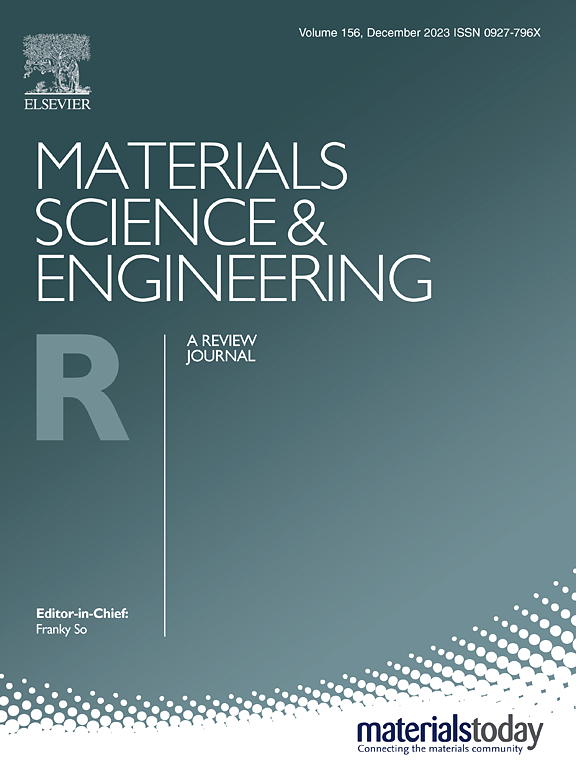Chlorophylls for dual-function exciton relay and morphology regulation in organic solar cells
IF 31.6
1区 材料科学
Q1 MATERIALS SCIENCE, MULTIDISCIPLINARY
引用次数: 0
Abstract
Chlorophylls (Chls), the most abundant and cost-effective natural pigments, exhibit outstanding optoelectronic properties and biocompatibility, making them highly attractive for artificial photosynthesis. In this study, we propose high-efficiency, eco-friendly organic solar cells (OSCs) by incorporating semi-synthetic Chl derivatives (Chl-1 and Chl-2) as analogous functions of charge transfer intermediator. These Chl derivatives not only modulate the molecular stacking and crystallinity of the active layer, promoting a favorable face-on molecular orientation and a denser crystalline structure, but also enhance exciton generation and diffusion as they function in nature and facilitate charge transfer between PM6 and BTP-eC9. Consequently, these synergistic effects significantly improve the exciton generation, dissociation, and charge transportation processes for the Chl derivatives-based devices. As a result, devices incorporating Chl-2 achieve an outstanding power conversion efficiency (PCE) of 19.54 %, surpassing Chl-1 (18.86 %) and outperforming the control binary devices (18.05 %). This study presents an innovative strategy to enhance OSC performance by utilizing eco-friendly Chl derivatives, addressing challenges related to low-toxicity sustainability and high efficiency.
有机太阳能电池中双功能激子接力和形态调控的叶绿素
叶绿素(Chls)是最丰富、最具成本效益的天然色素,具有出色的光电特性和生物相容性,在人工光合作用中具有很高的吸引力。在本研究中,我们将半合成Chl衍生物(Chl-1和Chl-2)作为电荷转移中间体的类似功能,提出了高效,环保的有机太阳能电池(OSCs)。这些Chl衍生物不仅调节了活性层的分子堆叠和结晶度,促进了有利的面朝分子取向和更致密的晶体结构,而且还促进了激子的产生和扩散,促进了PM6和BTP-eC9之间的电荷转移。因此,这些协同效应显著改善了基于Chl衍生物的器件的激子产生、解离和电荷输运过程。结果,含有Chl-2的器件获得了19.54 %的出色功率转换效率(PCE),超过了Chl-1(18.86 %),并优于对照二元器件(18.05 %)。本研究提出了一种利用生态友好型Chl衍生物来提高OSC性能的创新策略,解决了与低毒性可持续性和高效率相关的挑战。
本文章由计算机程序翻译,如有差异,请以英文原文为准。
求助全文
约1分钟内获得全文
求助全文
来源期刊

Materials Science and Engineering: R: Reports
工程技术-材料科学:综合
CiteScore
60.50
自引率
0.30%
发文量
19
审稿时长
34 days
期刊介绍:
Materials Science & Engineering R: Reports is a journal that covers a wide range of topics in the field of materials science and engineering. It publishes both experimental and theoretical research papers, providing background information and critical assessments on various topics. The journal aims to publish high-quality and novel research papers and reviews.
The subject areas covered by the journal include Materials Science (General), Electronic Materials, Optical Materials, and Magnetic Materials. In addition to regular issues, the journal also publishes special issues on key themes in the field of materials science, including Energy Materials, Materials for Health, Materials Discovery, Innovation for High Value Manufacturing, and Sustainable Materials development.
 求助内容:
求助内容: 应助结果提醒方式:
应助结果提醒方式:


